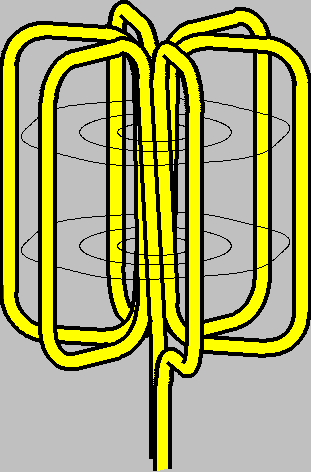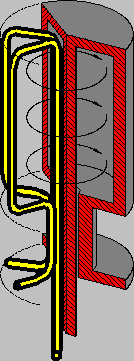
Fig. 1 Toroid Coil |
|

Fig. 2 Toroid Cavity adapted from a toroid coil of many parallel-wound single-turn coils |
|
|
|||
The Basics of Toroid Cavity Detectors

Fig. 1 Toroid Coil |
|

Fig. 2 Toroid Cavity adapted from a toroid coil of many parallel-wound single-turn coils |
|
|
|||
|
The confined magnetic field (B) inside the toroid cavity is accurately quantified by the simple equation: B = A / r , where A is a proportionality constant (torus factor), and r is the radial distance from the long axis of the cavity.
The confinement of magnetic fields in toroid cavities is ideally suited for high-pressure NMR spectroscopy in metal autoclaves, while the unique field gradient facilitates rotating frame NMR imaging on the micrometer scale. |
Additional information can be obtained from the further reading page or by e-mail request.
Back to Toroid Cavity NMR Spectroscopy and Imaging
K. Woelk, October 22, 1998